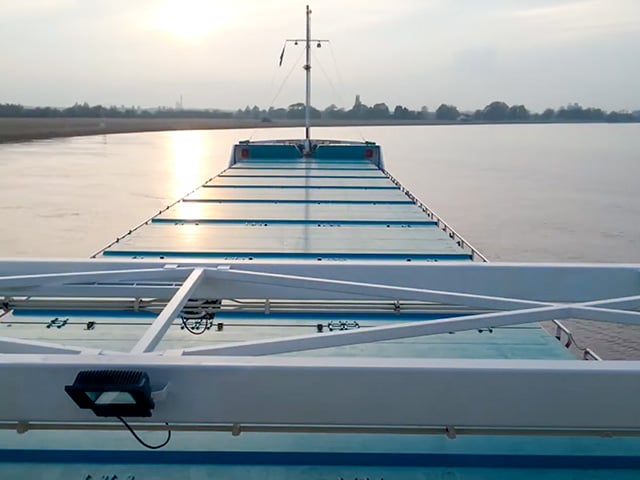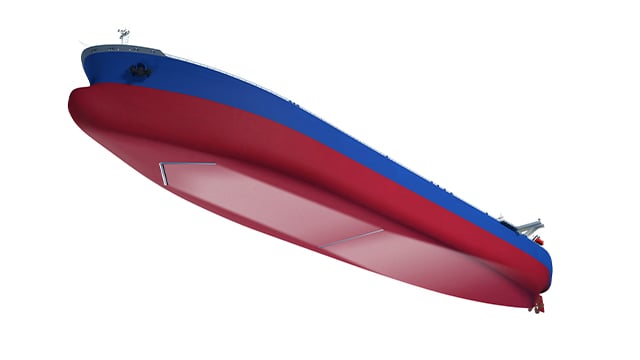Air lubrication
Air lubrication offers improved fleet economy and sustainability by reducing friction as vessels move through the water. Yet traditional air lubrication technology has failed to produce the promised results. That changes with fluidic air lubrication, a patented solution from Alfa Laval. The integration of fluidics – the control of fluid pressure and flow by means of precisely shaped channels, without any moving parts – enables substantial and reliable propulsion power savings.
A smooth path to energy savings
- Significant propulsion power savings improve sustainability scores (EEDI, EEXI, CII) and limit exposure to carbon taxation
- Fluidic solution produces an even, dynamic and air layer with few compressors
- Individually controllable sections allow full optimization of the air layer
- Fuel-agnostic technology reduces energy needs – no matter which fuel is used
Fluidics deliver on air lubrication’s promise
The idea of air lubrication is simple: to reduce friction between the vessel hull and the surrounding water by means of an injected air layer. Less drag means less propulsion power needed, which is less fuel burned, less money spent and less CO2 emitted into the atmosphere. In addition, it means less marine noise – with reduced onboard noise as an added benefit.
While the idea is simple, air lubrication has been challenging to realize in practice. Historically, it has required major vessel modifications, which has made it less practical for existing vessels. Alfa Laval OceanGlide changes the equation by integrating fluidics into the solution.
Why does fluidic technology make a difference?
Fluidics is the control of fluid pressure and flow by means of precisely shaped channels, without any moving parts. By combining air lubrication with fluidic technology, OceanGlide enables smarter creation and optimization of the air layer:
- Fluidic oscillators generate an even air layer with very high efficiency, reducing the compressor requirements.
- A thin air layer is generated over the entire flat bottom of the vessel, so that the whole vessel benefits from the reduction in drag.
- The coverage is provided in sections by air distribution bands, each of which can be independently controlled to optimize the air layer..
What can fluidic air lubrication achieve?
The air layer created by fluidic air lubrication reduces friction between the hull and the surrounding water. Alfa Laval OceanGlide yields substantial and reliable propulsion power savings, which lowers fuel consumption and CO2 output. In turn, that means improved sustainability scores (EEDI, EEXI, CII) and less exposure to carbon taxation. Yet the solution is quick and easy to install – requiring no sea chests, no large hull penetrations and as little as one compressor.


